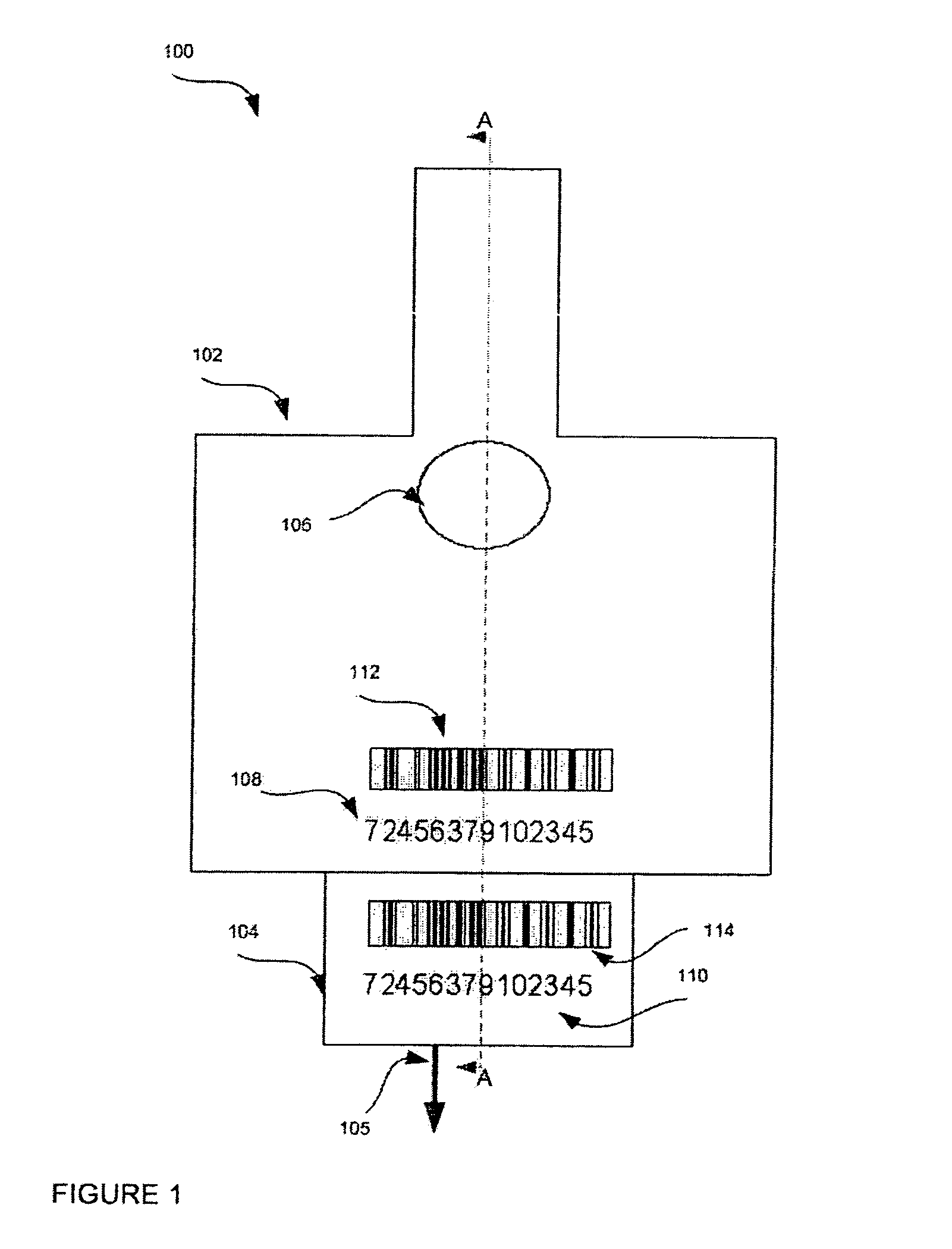Device and method for animal tracking
a technology for tracking devices and animals, applied in the field of identification animals, can solve problems such as loss, cost or ease of use, and inability to adapt to the environment, and achieve the effect of reducing disadvantages or eliminating disadvantages
- Summary
- Abstract
- Description
- Claims
- Application Information
AI Technical Summary
Benefits of technology
Problems solved by technology
Method used
Image
Examples
Embodiment Construction
[0032]Preferred embodiments of the present invention are illustrated in the FIGUREs, like numerals being used to refer to like and corresponding parts of the various drawings.
[0033]Embodiments of the present invention provide a system and method of identifying, sampling and tracking animals. According to one embodiment of the present invention, an identification device can placed on an animal. The identification device can comprise a tag portion that is configured to remain attached to an animal and a sample portion that is configured to retain a biological sample from the animal. Each of the tag portion and the sample portion can contain a common identifier (e.g., number, bar code, RFID or other identifier known in the art). Because the tag portion and the sample portion each contain a common identification, a biological sample and particular animal can be readily associated.
[0034]FIG. 1 is a diagrammatic representation of a device 100 for providing an animal with an animal identif...
PUM
 Login to View More
Login to View More Abstract
Description
Claims
Application Information
 Login to View More
Login to View More - R&D
- Intellectual Property
- Life Sciences
- Materials
- Tech Scout
- Unparalleled Data Quality
- Higher Quality Content
- 60% Fewer Hallucinations
Browse by: Latest US Patents, China's latest patents, Technical Efficacy Thesaurus, Application Domain, Technology Topic, Popular Technical Reports.
© 2025 PatSnap. All rights reserved.Legal|Privacy policy|Modern Slavery Act Transparency Statement|Sitemap|About US| Contact US: help@patsnap.com



